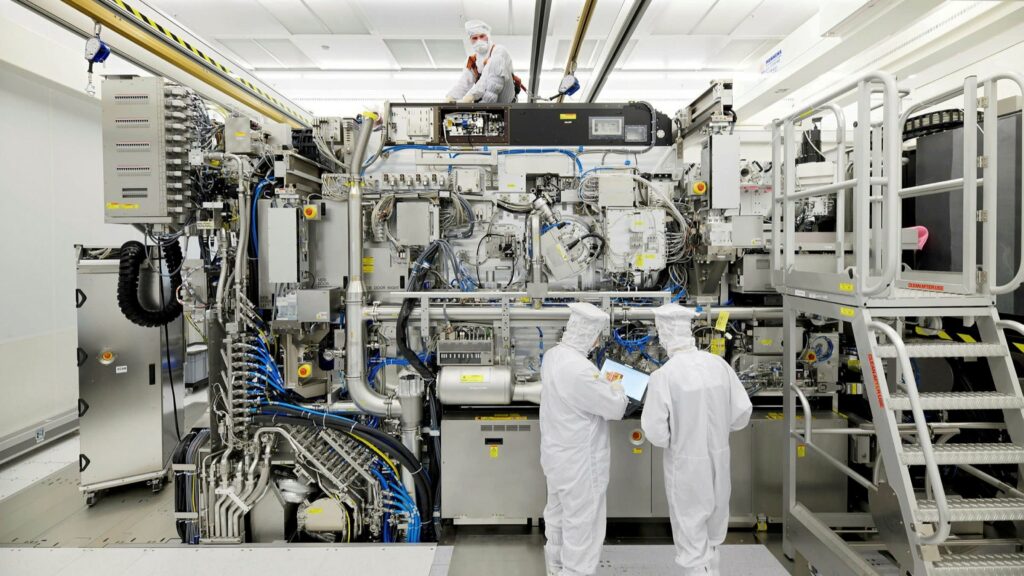ASML: reaping the benefits of size


ASML Holding NV updates
Sign up to myFT Daily Digest to be the first to know about ASML Holding NV news.
ASML’s key role in the chip supply chain — it makes the €150m lithography machines that inscribe integrated circuits on to silicon wafers — means its own version of Moore’s Law applies. In the past two years, second-quarter net income has doubled to €1bn while total share returns trebled.
Record high orders reflect ASML’s enviable position. It dominates the equipment industry which is the sine qua non of chipmaking during a global shortage. Competitors such as Japan’s Nikon and Canon have small market shares. Others lack ASML’s cutting-edge technology. Consensus-beating second-quarter results, released Wednesday, bear all the hallmarks of scale and demand. ASML upped its guidance for full-year revenue growth by five percentage points to 35 per cent year on year, while gross margins should hold firm above 50 per cent. A €9bn share buyback, up by half, also cheered the market.
ASML-etched chips are ever-present in daily life, whether for online browsing or taking holiday snaps. Shares trade on 38 times next year earnings, making it a pricier bet than European hardware peers. Yet the Dutch company flies under the radar. European officials bleating that the continent lacks tech giants routinely ignore it. Not so Washington. Tussling with Beijing over technology access, the US has mothballed the sale of a machine to Chinese chipmaker SMIC. Impact to date is difficult to discern on its sales as the proportion to the country has wavered recently.
The bigger risk is that, deprived of foreign lithography equipment, China will accelerate its own efforts adding competition. That, however, is unlikely to happen any time soon. ASML leads in cutting-edge extreme ultraviolet lithography systems, which utilise near-X-ray level wavelengths of 13.5 nanometres. It spends heavily on R&D; next quarter’s targeted budget of €654m should represent about 12 per cent of sales.
ASML has proved its ability to keep increasing revenues and squeeze out bigger margins in the process. For a linchpin in the semiconductor supply chain, paying a premium for its shares looks more than fair.
If you are a subscriber and would like to receive alerts when Lex articles are published, just click the button “Add to myFT”, which appears at the top of this page above the headline